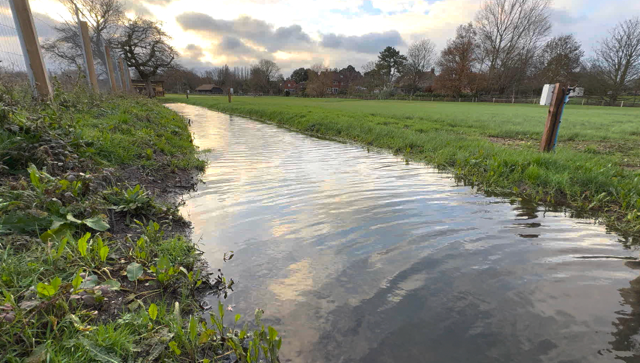
How our teams are tackling the challenge of record rainfall and high groundwater levels this winter
Months of extreme rainfall has left the region waterlogged. We're working hard to tackle our challenges.
Communities across the Southern Water region got a soaking this autumn – and we are still feeling the effects.
This October alone registered almost double the average rainfall for the month typically, while November 2023 saw more than one and half times more rainfall than experienced during the same period a year earlier.
That has left the ground in many parts of Hampshire, the Isle of Wight, Sussex and Kent absolutely waterlogged – with groundwater levels at extremely high levels.
So when fresh rain falls, it often cannot seep into the ground and instead simply runs off and ends up everywhere.
It pools on the surface, covering roads, fields and parks, causes streams and rivers to burst their banks, and races through highways drains and gulleys.
And it also forces its way into Southern Water’s sewers through any available crack in our 49,000km of pipework, or even through manhole covers or privately owned customer pipes.
Unfortunately, this has led to challenging flooding incidents in some locations in recent weeks, including in Barnham in West Sussex and along the River Test, which led to a temporary shutdown of our Testwood Water Supply Works in late October.
Alex Saunders, Head of Wastewater Networks, said:
“Coping with this inundation is a major challenge for our teams, who work hard to prevent the inundated pipes from allowing any wastewater back into properties or into the environment.
“That’s a key reason why we have wastewater tankers on standby – to help suck the flows out of the pipes and carry it straight to treatment works. This challenge is also driving our ongoing programme of relining thousands of kilometres of pipes to keep sewage in and water out.
“We do understand that tankers and relining works can be disruptive to communities, but all action we take to counteract the challenges of such prolonged wet weather and the geography of our region is crucial to improve our service to customers. We appreciate the public’s support while we carry out this important work.”
A re-lining project near Andover, where the area is prone to flooding, has seen the number of tankers needs slashed from 38 each winter in 2021 to just five this year.
Instead of replacing a pipe at a cost of £250,000 per 100 metres, causing significant inconvenience due to digging and traffic management, relining a pipe requires a minimal excavation and costs £10,000 per 100 metres, reducing the impact on customers’ day-to-day lives and bills.
Meanwhile, we published our £1.5bn Clean Rivers and Seas Plan this autumn which includes efforts being made by our dedicated Task Force to reduce the impact of groundwater on storm overflows.
